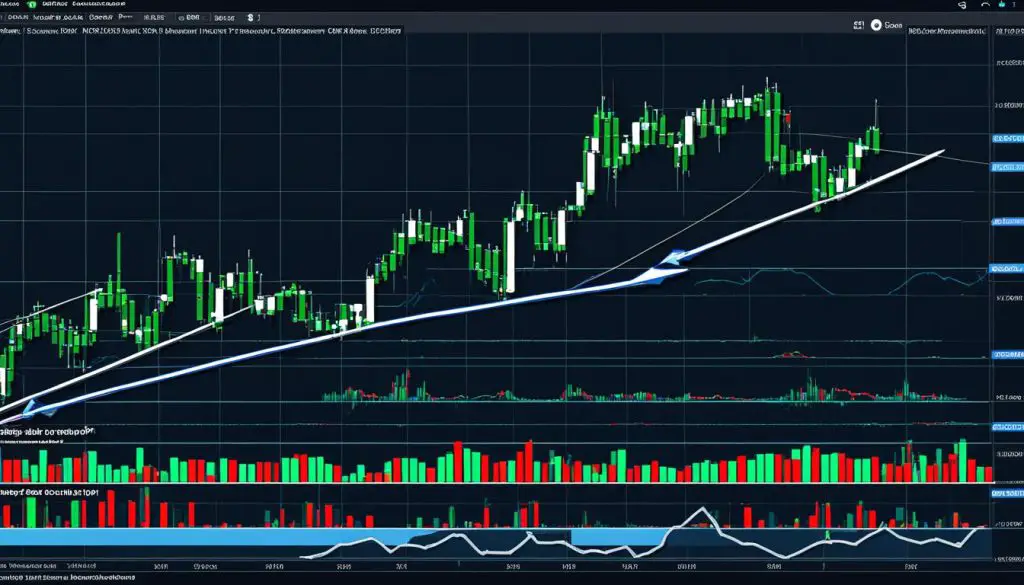The financial world is replete with stories of greatest trades of all time, where visionary investors made iconic investment moves. These historical trades are not only benchmarks of monetary gain but also tales of strategic acumen. Many significant trading decisions have reshaped industries and economies, becoming the stuff of legend. As we delve into these historic market deals, we uncover game-changing moments that continue to inspire and educate new generations of traders and investors alike.
Greatest Trades of All Time: The Giants of Wall Street
The financial world has been home to several monumental figures, whose legendary trades have transcended time and left an indelible mark on the history of trading. Amongst these venerable figures, the likes of Jesse Livermore, George Soros, and John Paulson stand out for their significant trading decisions that not only defined their careers but also shaped the financial industry. The stories of their iconic trades are a testament to the prowess and foresight required in the art of speculation.
Jesse Livermore’s Fortune from the Great Crash of 1929
Jesse Livermore’s name is synonymous with the historic crash of 1929, where his strategic decisions allowed him to capitalize immensely. By predicting the market’s downturn, Livermore shorted stocks at a time when the majority could not foresee the impending economic disaster. This strategic move cemented him in history as a speculative genius.
George Soros’ Legendary Bet Against the British Pound
The title “the man who broke the Bank of England” was befittingly bestowed upon George Soros after his legendary bet against the British pound. On Black Wednesday, 1992, Soros’s keen anticipation of market movements led him to short sell £10 billion, netting a staggering profit that still echoes in the fiscal corridors of history.
John Paulson’s Precise Bet Against Subprime Mortgages
In the years leading up to the 2007 financial crisis, few could have predicted the fall of the housing market. John Paulson, however, made a decisive bet against subprime mortgages, utilizing credit default swaps to hedge against the bubble’s burst. Paulson’s strategic foresight rewarded his hedge fund with approximately $4 billion.
| Trader | Trade | Year | Profit |
|---|---|---|---|
| Jesse Livermore | Shorting the market pre-crash | 1929 | $100 million |
| George Soros | Shorting British Pound | 1992 | $1 billion |
| John Paulson | Betting against subprime mortgages | 2007 | $4 billion |
The Infamous Black Wednesday Trade
On an eventful day in September 1992, George Soros made what would become one of the greatest trades of all time. Black Wednesday, as it came to be known, was not just significant for its immediate financial implications but also for its impact on historical trades in the annals of finance. On September 16 of that year, Soros’s conviction that the British pound was overvalued led to a monumental bet against it, seeing the UK’s withdrawal from the European Rate Mechanism (ERM) amidst financial tumult.
The fateful decision by Soros to short the British pound generated profits that are still talked about in forex circles. The success of the trade was compounded by England’s desperate measures to prop up the currency by raising interest rates—a strategy that ultimately failed and played directly into Soros’s hands. Below is an overview of the critical factors surrounding the Black Wednesday saga:
| Date | Event | Impact | Profit for Soros |
|---|---|---|---|
| September 16, 1992 | George Soros’s short position on GBP | Forced UK’s exit from ERM | $1 billion |
| Leading up to Black Wednesday | Increasing UK interest rates | Heightened economic strain | – |
| Post-Black Wednesday | GBP freefall and market volatility | Strengthened Soros’s forex trading legend | – |
George Soros’s legendary trade not only resulted in considerable financial gain but also underscored the profound influence an individual trader could wield on the global economic stage. That Wednesday in September is etched in history as a day that showcased the potential of astute market speculation and strategic financial maneuvering to alter the course of currency and country alike.
Technical Analysis and Foreseeing Market Crashes
Among the stories of astute traders who have navigated through the tumult of financial upheavals, the name Paul Tudor Jones stands out. His foresight in predicting the 1987 stock market crash, using technical analysis, is studied and admired by traders around the world. This method of dissecting market trends and patterns continues to be an invaluable tool in the arsenal of today’s investors.
Paul Tudor Jones’ Accurate Prediction of the 1987 Crash
In the annals of trading history, few events are as seminal as the 1987 stock market crash, and fewer still are the individuals who saw it coming. Paul Tudor Jones, a renowned investor and hedge fund manager, utilized an intricate system of technical analysis and patterns identified through Elliott Wave Theory to foresee a massive market correction. By recognizing the end of a significant bull market, he made one of the most significant trading decisions that led to a substantial profit, while many faced dire losses.
The Relevance of Technical Analysis in Modern Trading
Despite the evolution of markets and the onslaught of new trading instruments, technical analysis remains a cornerstone of trading strategy. Traders continue to draw on charting techniques and market psychology just as they did in the past, mirroring the vigilance and precision of icons like Jesse Livermore. The resilience of such strategies demonstrates the time-tested validity of technical analysis and the legacy of those who have wielded it effectively.
The influence of pivotal figures like Jones and the sustained efficacy of technical analysis underscore the significance of meticulously studying market trends. As both a science and an art, technical analysis equips traders to make educated, decisive moves in a landscape where history often repeats itself in one form or another.
Risky Bets that Reshaped Financial History
The landscape of finance has been dramatically altered by a series of notable financial transactions that were as audacious as they were visionary. Top trades in history are often those where the stakes were high and the outcomes hugely influential. Notable among these are the trades placed by Kyle Bass and Jim Chanos, trailblazers who saw beyond the market facade and navigated their way to astounding profits.
Kyle Bass stood against the tide of conventional wisdom when he predicted the subprime mortgage collapse. His profound understanding of the housing market’s unsustainability allowed him to short mortgage-backed securities and subsequently secure massive gains during the 2008 crisis. Meanwhile, Jim Chanos exhibited exceptional analytical acumen by detecting Enron’s skewed financial statements. His strategic positioning led to lucrative rewards when Enron’s share price plummeted, affirming his status among famous trade experiences.
- Kyle Bass: Known for his contrarian outlook, Bass founded Hayman Capital Management and became famous for his bet against subprime mortgages, foreseeing the collapse that defined the 2008 financial crisis.
- Jim Chanos: His keen investigation into Enron’s financial malfeasance well before the scandal broke is a classic example of the impact diligent research and financial skepticism can have in recognizing a failing giant.
These influential trade stories share a common thread: the willingness to embrace risk and to question the status quo. The audacity exhibited by these traders underscores the resilience and inventiveness inherent in the world of finance. It is these qualities that inspire future generations to scrutinize the market landscape with a critical eye, seeking opportunities that could yield the next remarkable tale in the compendium of financial history.
Their strategic bets remind us that while not all risks are created equal, those that are informed and meticulously calculated can indeed pay dividends and infuse the markets with new narratives and lessons. Bass and Chanos didn’t just wager on market moves; they shaped the course of financial history.
Conclusion
In reflecting on the most celebrated trades in financial history, we uncover vital lessons from historical trades that reinforce the essence of trading as an interplay of intellect and instinct. Traders who have etched their names into the annals of financial lore did not rely solely on cold, hard analytics; they integrated a profound sense of intuition in trading. The strategic trading decisions made by experts such as John Templeton and Louis Bacon elucidate that it takes more than just numbers to govern the markets—it requires an astute understanding of when to diverge from the herd and the courage to act upon it.
Lessons Learned from Legendary Traders
The wisdom of these trading icons offers a wealth of insight for those navigating the tumultuous seas of finance. A common thread among their stories is the dispelling of the myth that lightning-strike luck is the driver of monumental successes in trading. Instead, through careful analysis, keen observation, and an unwavering financial strategy, these traders achieved remarkable feats. They teach us the value of patience, the power of market sentiment, and the critical importance of timing.
The Role of Intuition and Strategy in Trading
Furthermore, while empiricism is crucial, intuition plays a pivotal role. The subconscious synthesis of experience with insight can lead to epiphanies that defy conventional wisdom but lead to historical payoffs. The strategic foresight and decisiveness cultivated by traders embody the spirit and intellect required to discern and seize opportunities that could redefine one’s financial trajectory. In essence, their legacies offer a masterclass in balancing the scales of risk and reward through strategic planning and intuitive prowess—foundational pillars for anyone aspiring to replicate such legendary transactions.
FAQ
Notable trades that stand out in history include Jesse Livermore’s lucrative shorting of the stock market during the 1929 crash, George Soros’s massive gain from betting against the British Pound on Black Wednesday in 1992, and John Paulson’s successful prediction and bet against subprime mortgages prior to the housing market collapse in 2007.
Kyle Bass’s shorting of mortgage-backed securities before the 2008 crisis and Jim Chanos’s successful bet against Enron after identifying accounting fraud are both prominent examples of risky trades that had a significant impact on financial markets and history.
The lessons learned include the importance of thorough analysis, the relevance of having an adept understanding of market forces and psychology, and the immense value of strategic risk-taking when the potential for high reward is identified.






